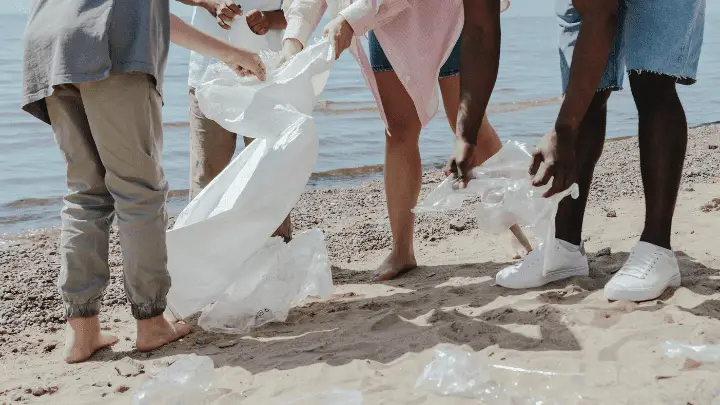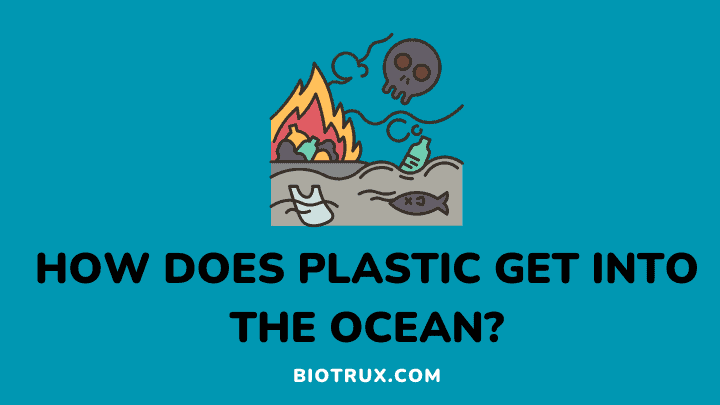The global plastic pollution crisis is one of our most pressing environmental issues. Every year, millions of tons of plastic end up in our oceans, creating a vast expanse of garbage patches that harm marine life and our ecosystems.
Unfortunately, much of this plastic comes from everyday sources such as water bottles, straws, food containers, and packaging materials. Plastics are in all ocean parts, from the surface to the seafloor.
But how does plastic get into the ocean in the first place? This article will explore how plastic enters our oceans and discuss potential impacts and solutions for reducing plastic entering our waters.
Plastic is Becoming an Increasingly Prevalent Pollutant in Our Oceans
Plastic pollution is one of the most pressing environmental issues of our time. It is estimated that around 14 million metric tons of plastic annually enter the ocean, which is increasing rapidly.
As a result, plastic waste is becoming increasingly prevalent in our oceans, posing a major threat to marine life and ecosystems. The primary source of this plastic pollution island-based activities such as littering, improper waste disposal, and industry runoff.
Plastic debris is present throughout the water column, from the ocean surface to the seafloor. It accumulates in gyres and accumulations, such as the infamous Great Pacific Garbage Patch.
This accumulation of plastics affects a wide range of marine life, including fish, seabirds, and turtles.
What is the Impact of Plastic Pollution on Marine Life?
Plastic pollution has become increasingly concerning in our oceans and other water bodies. Plastics mainly affect marine life due to their ingestion, entanglement, or suffocation. Here are five major impacts of plastic pollution on marine life:
- Choking and suffocation: Plastic debris can trap, strangle or block airways, causing suffocation or strangulation. Animals like sea turtles, seals, and dolphins are at risk, as they can become entangled in large pieces of plastic or small parts such as fishing lines.
- Degradation: Plastic does not biodegrade – instead, it breaks down into smaller pieces known as microplastics. These microplastics are then ingested by filter-feeding animals such as whales, mussels, and oysters, resulting in internal damage and organ failure.
- Ingestion: Animals often mistake plastic for food, leading to digestive system blockages and reduced nutrient absorption. In addition, chemicals in the plastic can be leached out into the animals’ bloodstreams, poisoning them in the process.
- Toxic chemicals: Plastic materials often contain toxic chemicals such as phthalates and Bisphenol A (BPA), which can seriously impact marine animals.
- Habitat destruction: Plastic debris can act as an artificial reef, providing a substrate for barnacles, algae, and other organisms to live on. This artificial habitat can compete with native species for resources and reduce biodiversity in the area.
These are just a few of plastic pollution’s impacts on marine life. It is still unclear how much plastic pollution impacts marine life, but its effects are wide-ranging and potentially catastrophic.
Unfortunately, this problem is only worsening, and more should be done to reduce plastic entering our waterways.
How Does Plastic Get Into the Ocean?
To understand how to stop the flow of plastic into our oceans, it is important to know how plastics enter in the first place. Here are five common ways that plastics end up in the ocean:
- Through direct discharges from landfills: Plastics carelessly discarded in landfills can easily find their way into nearby water sources. When these waterways connect to the ocean, they can act as conduits for plastic pollution.
- Through littering: People who litter plastic items such as bottles, bags, straws, and packaging can easily end up in rivers, lakes, and oceans if not disposed of properly.
- Through runoff: Plastic pollution can also enter the ocean through runoff from streets, parking lots, and other areas where plastic has been improperly disposed of. Rainwater can pick up these particles and deposit them into nearby water sources.
- Through illegal dumping: Some individuals and companies illegally dump plastics directly into oceans, rivers, and lakes. This unlawful activity adds large amounts of plastic to our waters and exacerbates plastic pollution problems.
- Through cruise ships and fishing vessels: Ships and fishing vessels often release large amounts of plastic debris directly into the ocean as they travel. Additionally, many fishing nets and traps are lost in the ocean each year and become long-term sources of plastic pollution.
By understanding these five primary sources of plastic pollution, we can better identify strategies to mitigate and keep plastics out of our oceans.
As more people become aware of the problem and strive to reduce their plastic use, we can help save our oceans from further destruction.
What Can Be Done to Reduce Plastic in the Ocean?

Reducing plastic entering the ocean is essential for preserving marine life and ecosystems. Here are five ways to help reduce plastic pollution in the ocean:
- Reduce your use of single-use plastics. Committing to reducing or eliminating your use of disposable plastics such as shopping bags, straws, water bottles, and food containers can go a long way toward reducing plastic waste.
- Choose reusable items over single-use items. Reusable items like shopping bags, metal straws, and insulated water bottles are easy and stylish alternatives to single-use plastics.
- Recycle properly. Making sure that all plastic waste is disposed of correctly is important for reducing plastic pollution. Find out what types of plastic can be recycled in your area and follow the guidelines.
- Support companies and organizations that are working to reduce plastic pollution in the ocean. Look for companies trying to reduce plastic use and support local organizations working to clean up the ocean.
- Spread the word about plastic pollution in the ocean. Educating others about the dangers of plastic pollution in the ocean can raise awareness and inspire more people to take action against plastic pollution.
These are just a few simple steps we can all take to help reduce plastic pollution in the ocean. By reducing our plastic use, we can make a big difference in protecting our oceans and preserving marine life for generations.
FAQs
How much plastic is currently in the ocean?
It is estimated that there are currently 5.25 trillion macro and micro pieces of plastic in the ocean.
What government policies are in place to combat plastic pollution?
Governments worldwide are increasingly implementing legislation and measures such as bans, taxes, and public awareness campaigns to reduce plastic waste.
What types of plastic enter the ocean?
The most common types of plastic entering the ocean are single-use plastics like bottles, bags, straws, and food packaging.
Final Thoughts
Plastic pollution is a complex problem with no easy solutions. We must strive to reduce plastic production and consumption, particularly single-use plastic items.
We should also work to manage our waste systems better to ensure that plastics don’t end up in the oceans in the first place.
Lastly, we must be proactive about removing the existing plastic debris from our oceans before it does any more damage to marine life and ecosystems. You can also learn to advocate for the environment to make a difference.
Thanks for reading.

